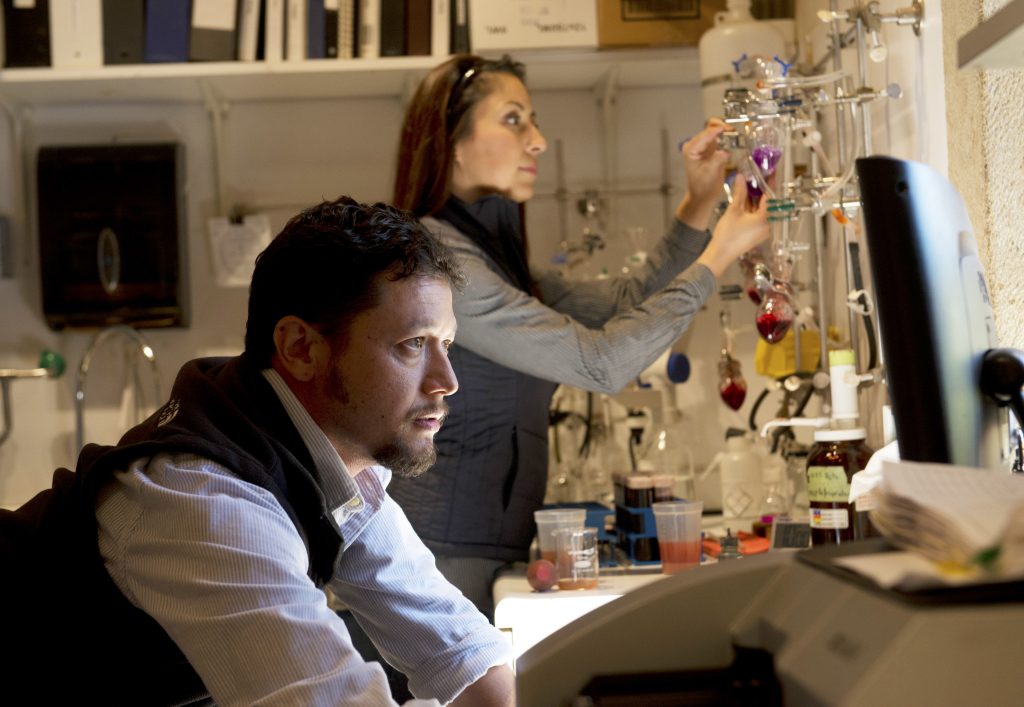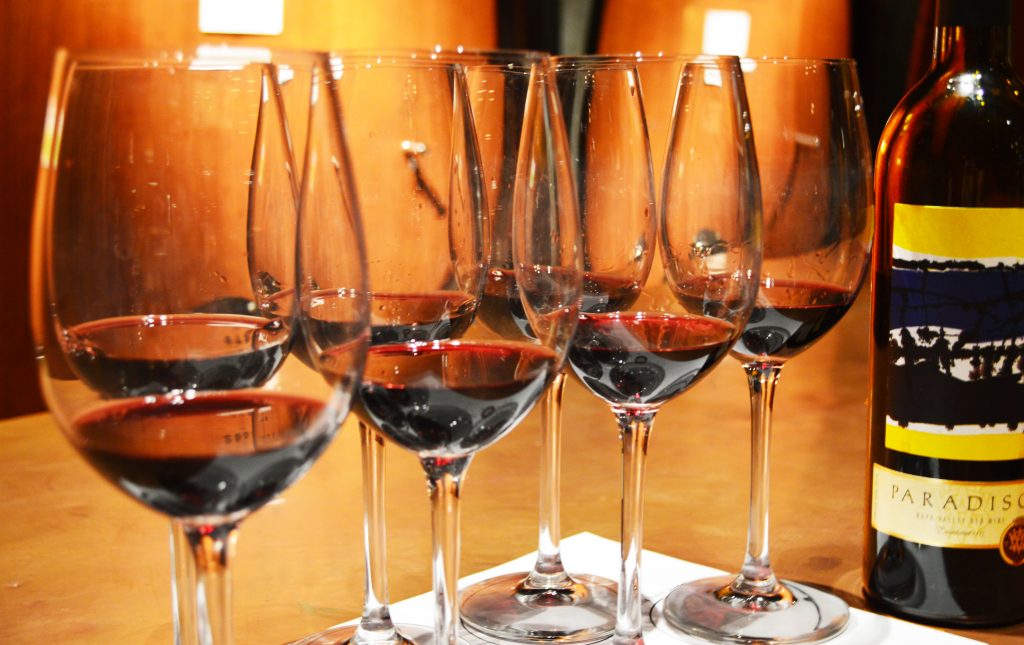A vital step in the winemaking process, blending assures the final product will be balanced and layered with flavorful, aromatic, and textural complexities. At V. Sattui, this process is being brought to life on a regular basis with their blending seminar. Discover the art of blending and get ready for an experience of a lifetime!
What is blending? Exactly what it sounds like. A team of winemakers gathers during the winemaking process to blend various varietals. The reason? To determine which components to bring to the overall blend, and to ensure the stylistic goals and consistency that the wine consumer is looking for, and pull all the pieces together. More specifically, blending allows winemakers to: Create a recognizable house-style; minimize undesirable components; enhance desirable components; highlight a vineyard’s terroir; improve vintage consistency, and “up-blend” to enhance the wine uniqueness and overall high quality.
The possibilities with blending are endless, and the key is consistency.
How-to

Grab your goggles and suit up, it’s time to play mad-scientist! While the art of blending wine does have a scientific approach, the rules are rather simple.
- Always have a goal in mind (ex. correcting a wine with too much tannin by blending in a lower tannin wine: or conversely, build intensity in a wine by using a blending component that adds to the structure and richness (for example Petite Verdot).
- Typically we blend wines of a similar type (Bordeaux with Bordeaux, Rhone with Rhone, etc.).
- By blending a high-quality wine with a weaker wine you can increase the quality of the lower wine, but what are you giving up in return? It is better to classify the components by quality and grade, and blend like-qualities.
- Begin blending in small quantities until you reach the desired outcome
- Take notes!
Once you think you have achieved the “ideal blend,” it’s time for the next step…
Blind Tasting
 After each winemaker puts together his or her sample blend, it’s time to taste test.
After each winemaker puts together his or her sample blend, it’s time to taste test.
Why blind? Everyone’s palate is different, and whether we like to admit it or not, everyone is partial to their blend. A crucial moment in winemaking, it’s time to leave your ego behind. After multiple tasting rounds, discussing the good, the bad, and what might be missing, a unified sense of direction blossoms. After all, the goal is to make the wine the best it can be.
Once a decision and final blend are agreed upon, it’s back to the cellar. The barrels of wine have to be blended precisely the same way as in the lab.
Common Blends

A common misconception that “blends” are of lesser quality is just that, a misunderstanding. To help you navigate the shelves, some of the most common blends include:
-
Bordeaux
Arguably one of the most typical blends around the world; the red Bordeaux blend consists of Cabernet Sauvignon, Merlot, Cabernet Franc, Petit Verdot, and Malbec. Flavors vary depending on the area and proportion of grape varietals used in the blend. On the left bank, higher amounts of Cabernet Sauvignon are added, making the wine more structured with higher tannins. On the right bank, wineries will add more Merlot and Cabernet Franc for a softer, more supple wine which might require less aging.
-
Meritage
A Bordeaux-style blend, Meritage blends are created from French varietals grown in the New World wine regions, especially California. A red Meritage blend will generally consist of the classic Bordeaux combination: Cabernet Franc, Malbec, Cabernet Sauvignon, and Merlot (with hints of Carménère and Petit Verdot). Meritage wines can also be a white blend, for example, blending Semillon and Sauvignon Blanc together. Meritage blends are known for their versatility in the sense that they can be enjoyed young but also stand up to aging.
-
Rhone Blends
In the Rhone River Valley of France, it is typical to blend several varietals together, such as Syrah, Grenache, and Mourvedre to make a complex red wine blend. These wines are very interesting and the contribution from each varietal adds complexity, aromas, and flavors to the finished wine.
Are you ready to blend?

Have you always dreamed of becoming a winemaker? Making dreams come true, V. Sattui Winery invites you to our hands-on workshop August 12th to learn the magic of blending. An intimate seminar, this is your chance to create your own blend in an effort to match our prestigious Bordeaux blend, Paradiso.
Seats are limited, so grab a friend and reserve your blending experience today!
Call (707) 963-7774 or Book Online